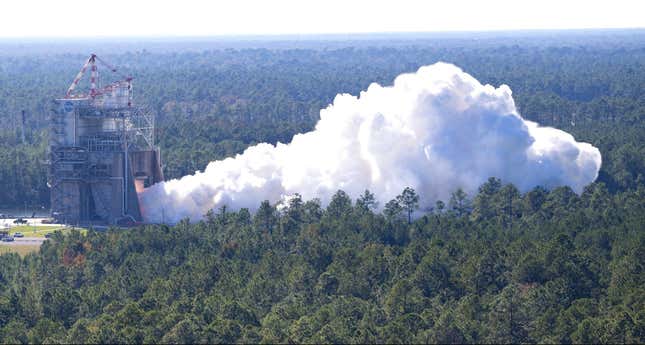In recent updates on NASA’s Artemis program, all four core stage engines have been installed onto the booster of the second Space Launch System (SLS) rocket, but a production issue has temporarily slowed work on the third.
NASA’s ambitious Artemis program, aimed at sending astronauts back to the Moon for the first time since the Apollo era, appears to be ticking along nicely. The installation of all four RS-25 core stage engines onto Core Stage-2 (for use in Artemis 2) marks a major milestone, though production on Core Stage-3 (Artemis 3) has faced a minor setback due to a welding issue. Meanwhile, looking ahead to Artemis 5 and beyond, the revamped RS-25 rocket engines have undergone their inaugural certification test.
On October 6, all four RS-25 engines were successfully affixed to Core Stage-2’s propulsion and avionics system, as confirmed by a NASA press release. The space agency collaborates with Aerojet Rocketdyne on engine development and with Boeing as the core stage’s primary contractor.
This procedure began in early September, with the final engine installation taking place on September 20. NASA says that “after the initial structural connections of the individual engines, the most time-consuming phase is securing and outfitting all four engines to the stage. This involves fastening the thrust vector control actuators, ancillary interfaces, and finalizing the bolts, followed by several tests and checkouts.” In other words, ensuring all engine components are properly attached and verified for performance.
Standing tall at 212 feet (64.6 meters), the core stage boasts two large liquid propellant tanks and four RS-25 engines, a heritage from the Space Shuttle days. Combined, the core stage provides an impressive thrust of over 2 million pounds at liftoff. In the coming weeks, engineers will be assessing the entire stage, especially its avionics and electrical systems, which are pivotal for the rocket’s guidance during flight. Should these inspections be favorable, the core stage will be transported to Kennedy Space Center in Florida via NASA’s Pegasus barge, originating from the Michoud Assembly Facility in New Orleans.
It hasn’t been all smooth sailing, however. An unspecified welding challenge has arisen at the Michoud Assembly Facility, as reported by NASASpaceFlight. This snafu has delayed the completion of the liquid oxygen (LOX) tank intended for Core Stage-3, which is crucial for the Artemis 3 mission. But according to Jonathan Looser from NASA, a resolution appears to be at hand. Core Stage-2 is expected to be completed later this year, while Core Stage-3 is slated for late 2024 or early 2025, aligning with NASA’s timeline for the second and third Artemis missions. This is despite some supply chain issues seen across the industry, Looser told NASASpaceFlight.
Related article: NASA’s Artemis Moon Landing Program: Launches, Timeline, and More
The Artemis 2 mission is earmarked for late 2024 or early 2025, and its goal is to transport four astronauts on a 10-day mission around the Moon. This journey, if successful, will serve as a prelude to the Artemis 3 mission. Scheduled for 2025 or 2026, Artemis 3 will attempt to land astronauts on the lunar surface—a feat not attempted since 1972.

In yet another Artemis update, the revamped RS-25 engine is also showing promise. It was recently tested for 550 seconds at NASA’s Stennis Space Center in Mississippi, exceeding the required duration by 50 seconds. This test is the first of 12 planned through 2024, steered by Aerojet Rocketdyne. The aim is to gauge the efficacy of new engine components, with techniques like 3D printing enhancing the production process. These RS-25 engines are fundamental for powering the SLS rocket during its lunar missions.
These updates remind us that Artemis 1, carried out from November 16 to December 11, 2022, was just the beginning, but as the space agency moves forward, it’s having to confront some intense criticisms. NASA’s inspector general has cast doubt on the project’s sustainability, labeling the fully expendable SLS Moon rocket’s hefty price tag of $4.2 billion per launch as unaffordable. Moreover, its approach to tackle escalating costs has been met with skepticism, deemed by the inspector general as insufficient in addressing the financial challenges ahead.
For more spaceflight in your life, follow us on X (formerly Twitter) and bookmark Gizmodo’s dedicated Spaceflight page.

